Written By Mandy Arcitio, MS Aromatherapy
Affiliate disclosure statement: Any link in this article maybe an affiliate link. An affiliate link for me just means that if you make a purchase from the link, I will earn a small commission. There is never any pressure to purchase from my links but they are greatly appreciated!
Hey Mama! Kid and Pup Friendly Essential Oils for the Win!
Feeling overwhelmed by essential oils (EO), especially with little ones and furry friends around? You’re not alone! Many essential oils offer amazing benefits, but not all are safe for children or pets. That’s why I’m here to help busy moms like you navigate the world of essential oils and find some kid and pup friendly options!
We’ll explore some of the basics of each oil, focusing on those safe for diffusing around your playful crew (both two-legged and four-legged!). The EOs listed below are safe for diffusing and creating a calming atmosphere that your whole pack can enjoy. We’ll also explore some basic safety tips and answer all your questions about using these gentle oils around your precious kiddos and pups.
Let’s get started!
12 kid and pup friendly essential oils
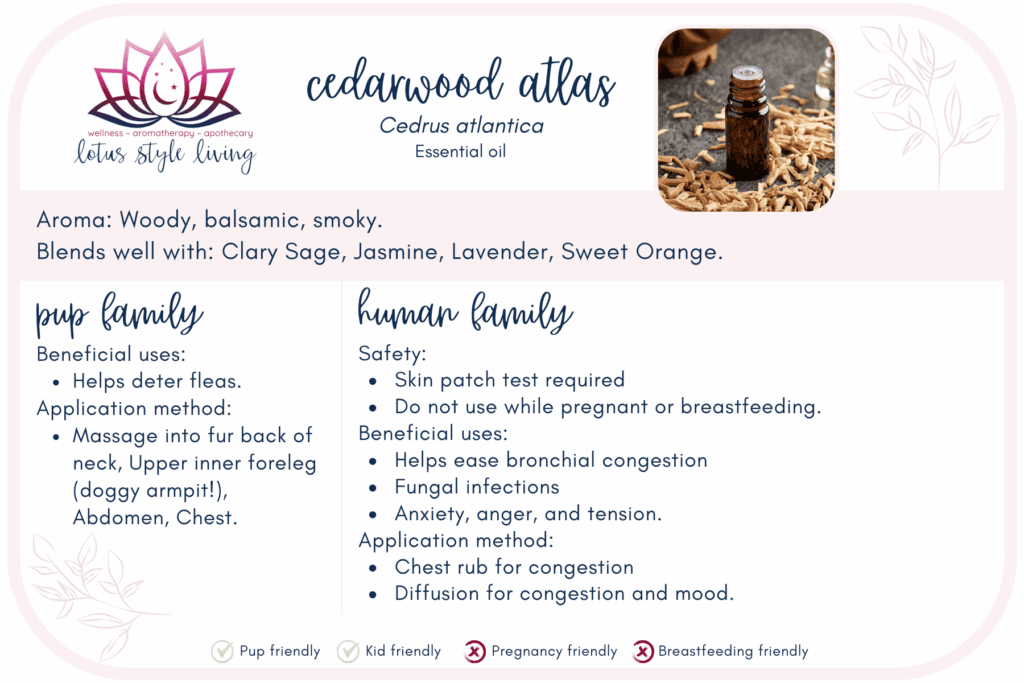
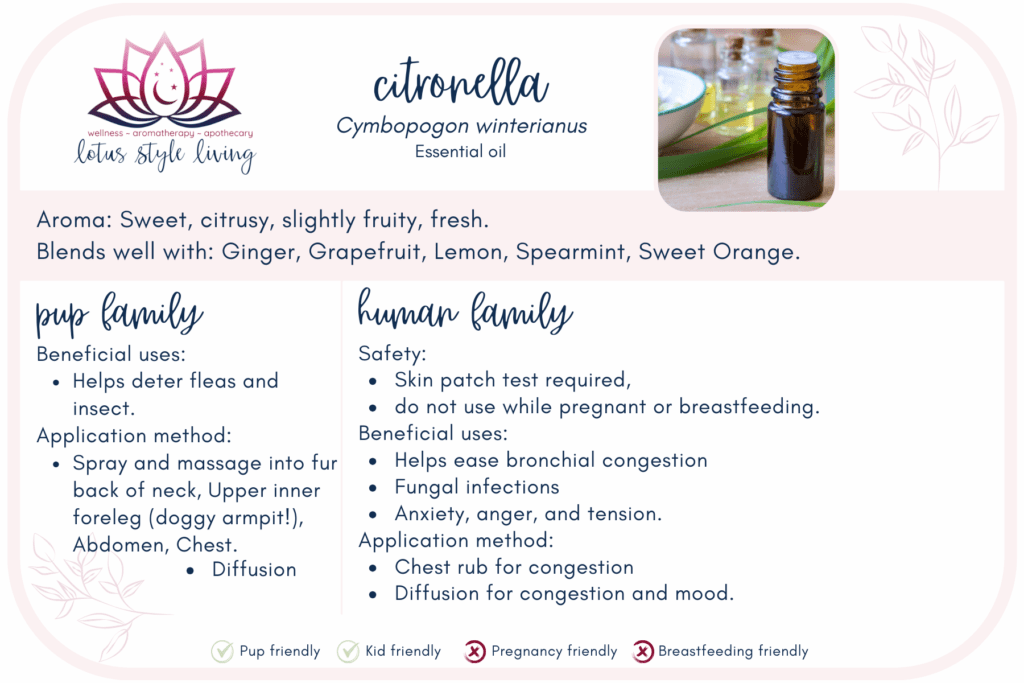
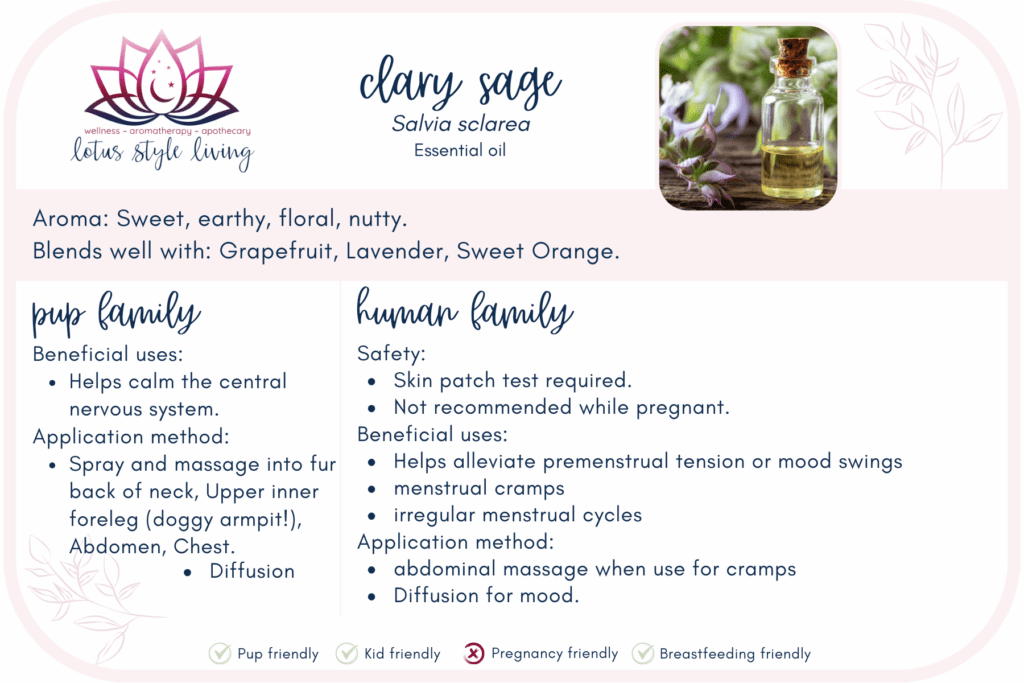
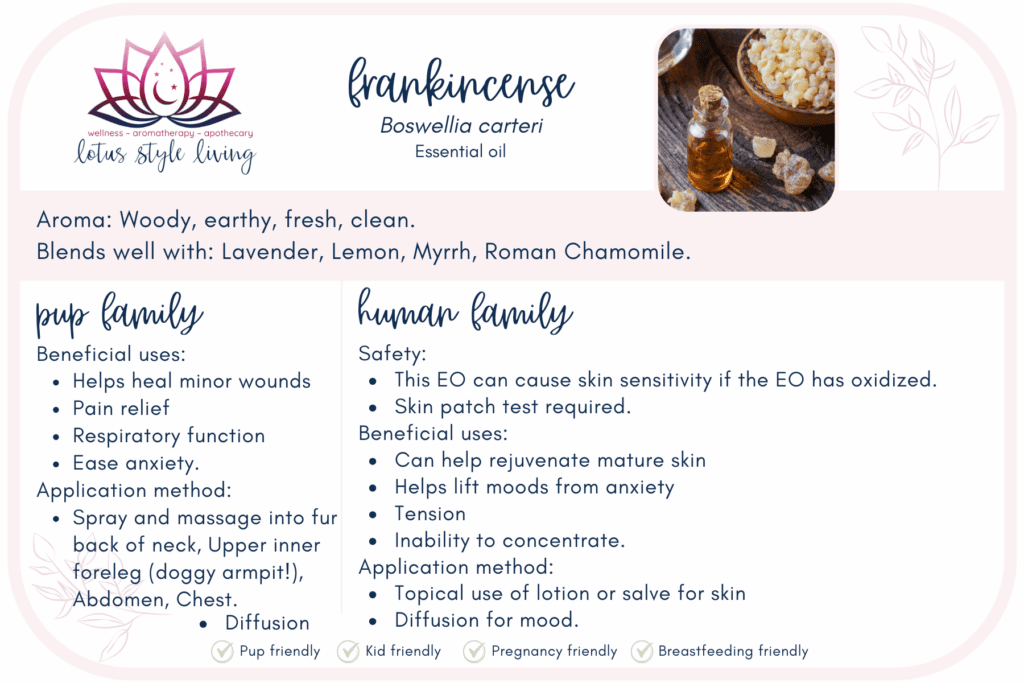
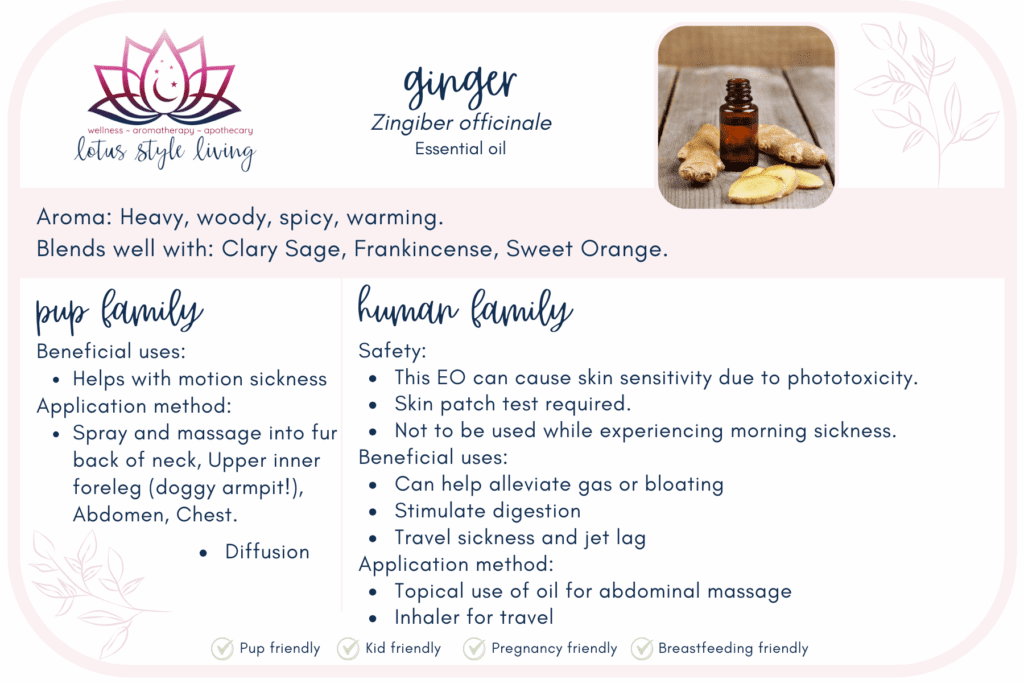
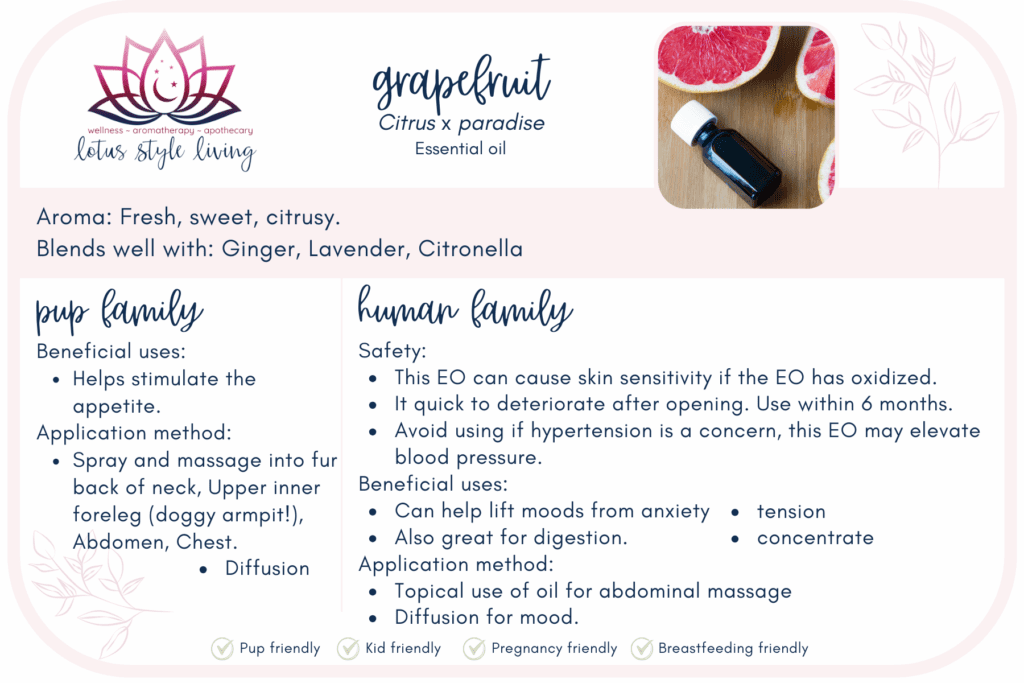
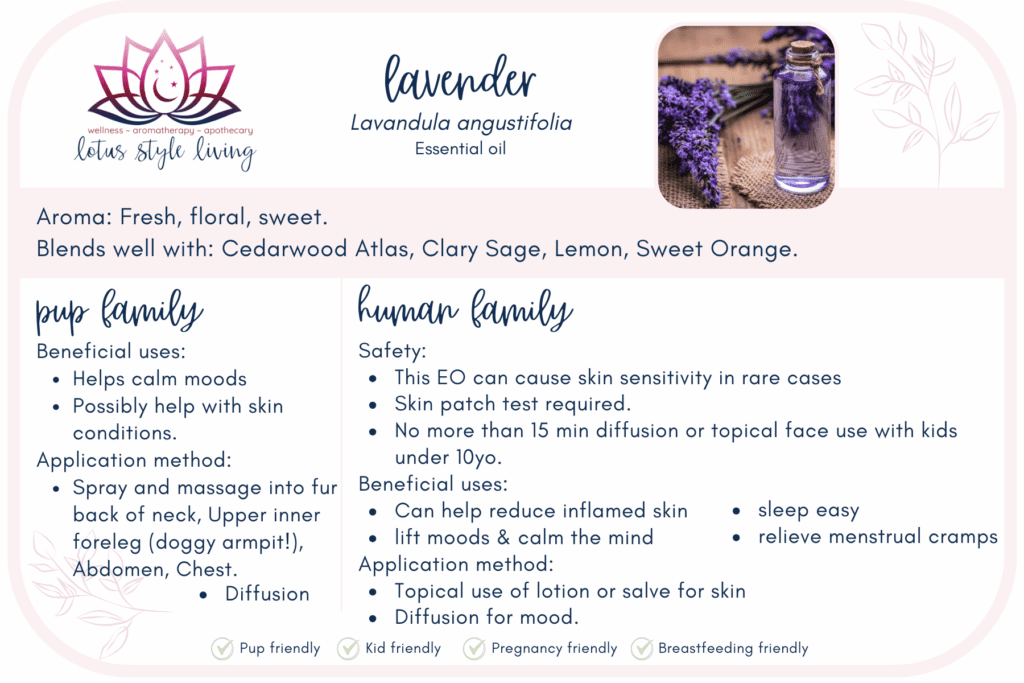
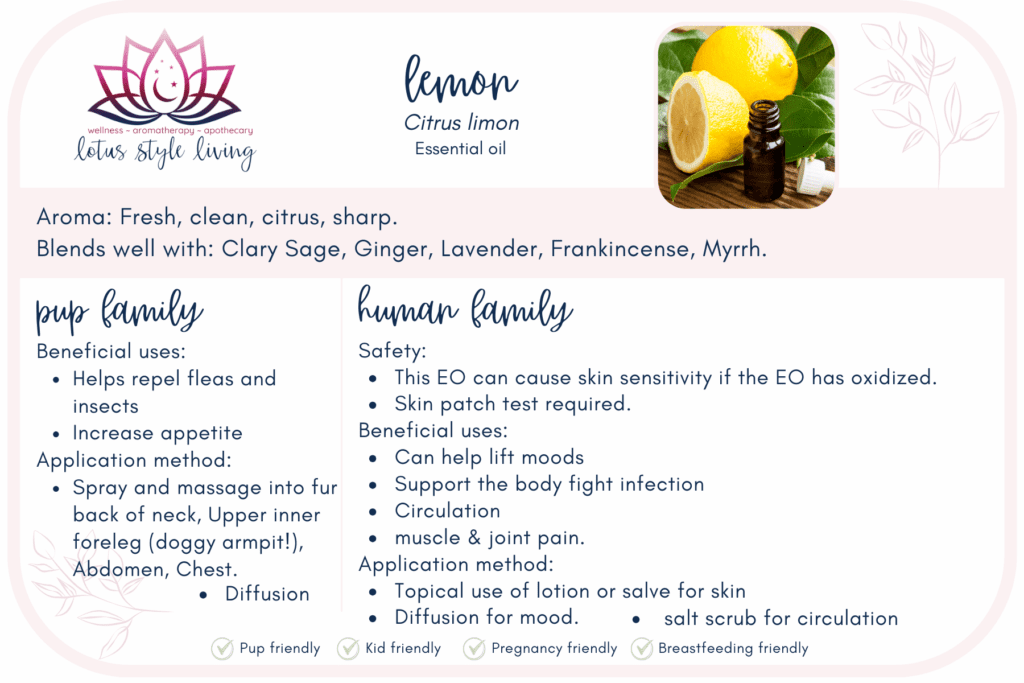
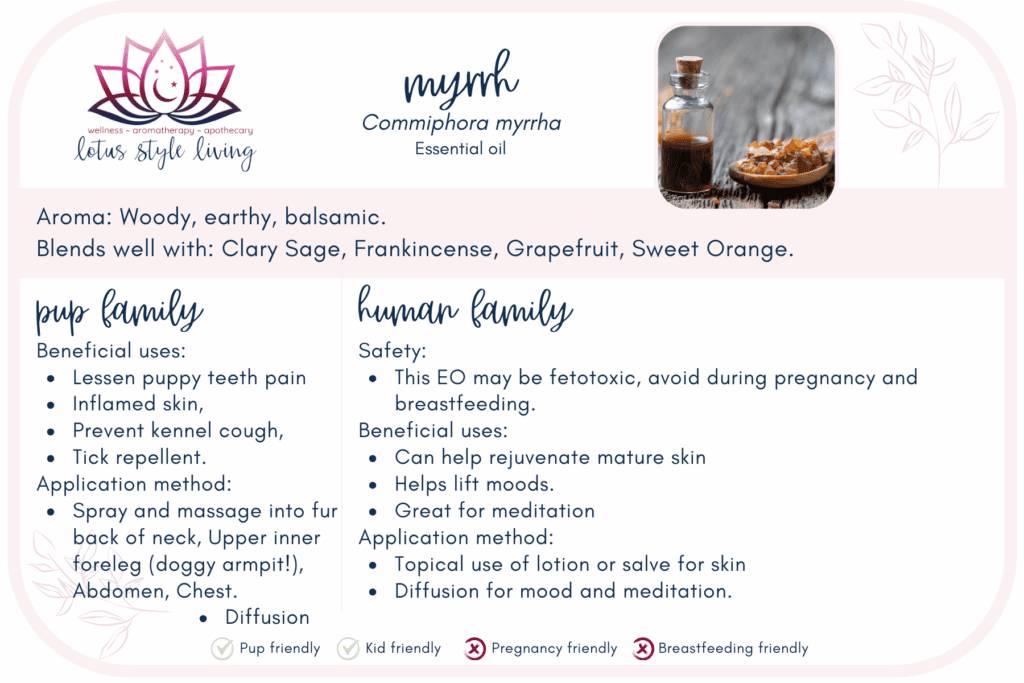
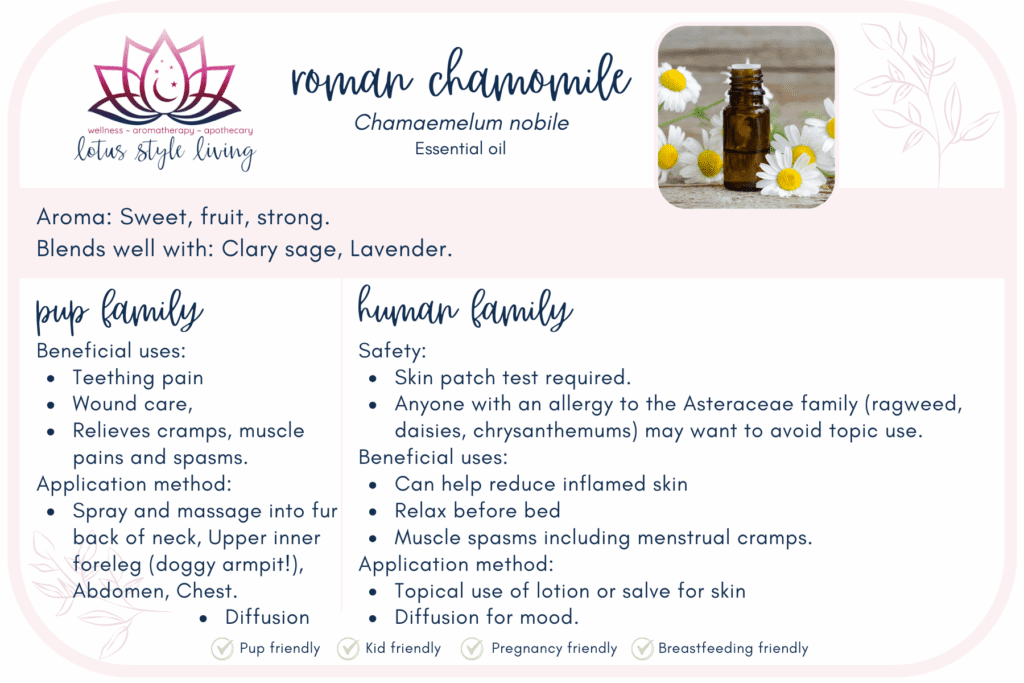
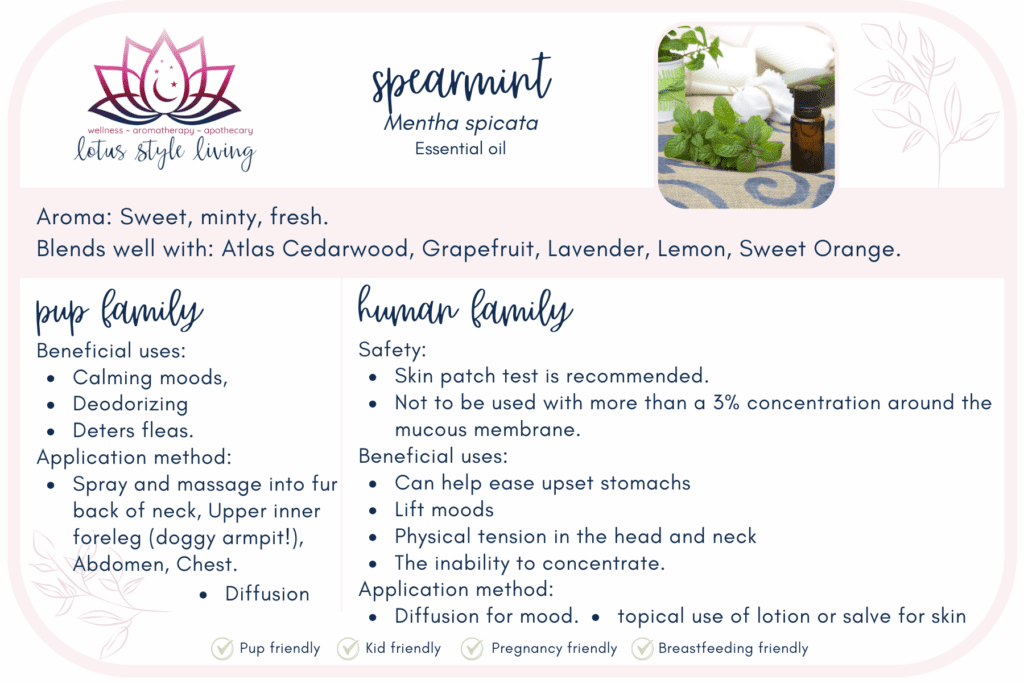
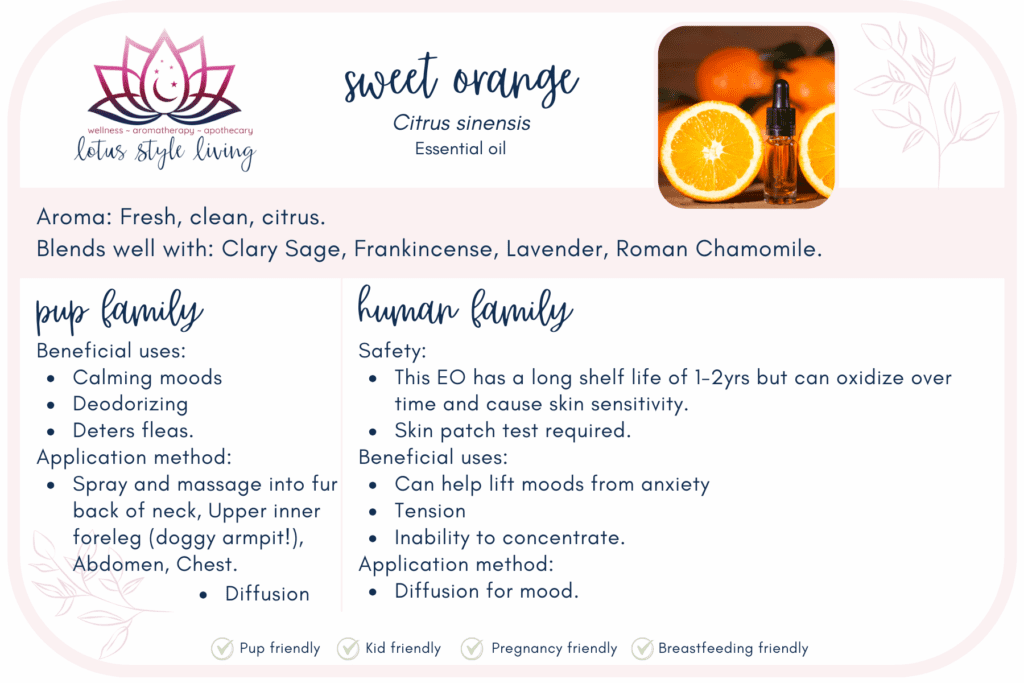
Extra Bonus: Kid friendly, mood lifting diffuser recipe
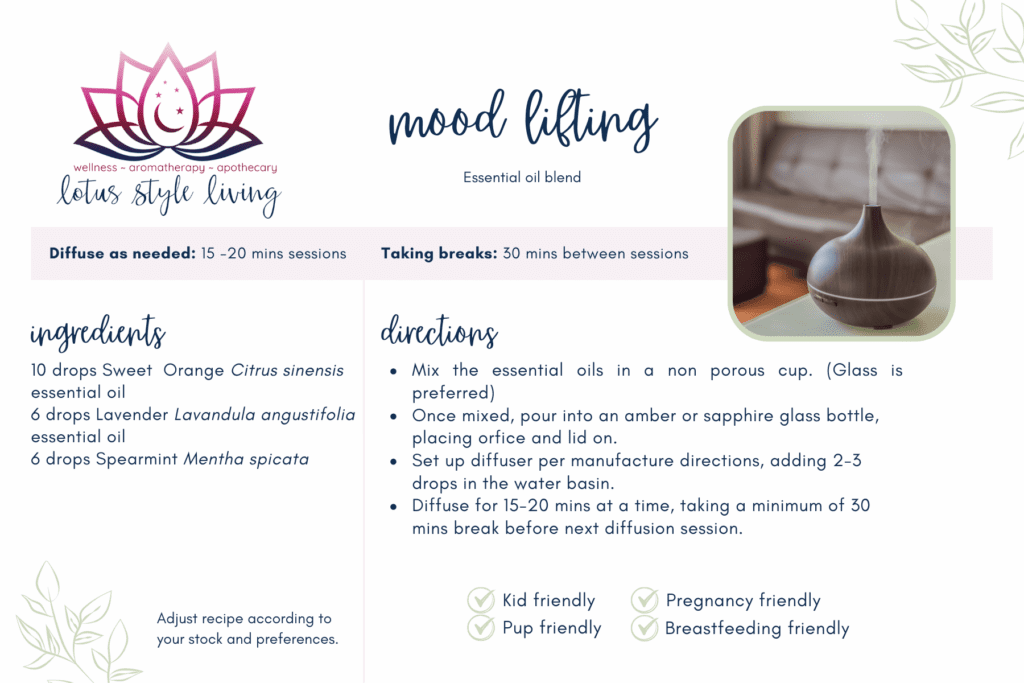
Carrier Oils
A carrier oil is like the sidekick to your essential oils, helping them do their job effectively. Think of it as the trusty vehicle that carries essential oils, which are highly concentrated and potent. When you mix essential oils with a carrier oil, it not only makes them safe but also helps them absorb better, providing nourishment and benefits for you and your family without any superhero capes involved!
Light Carrier Oils:
- Jojoba Oil: Although technically a liquid wax, jojoba oil is light and easily absorbed. It closely resembles the natural oils produced by our skin.
- Grapeseed Oil: This oil is light and non-greasy, making it suitable for all skin types. It contains antioxidants and vitamins.
- Sweet Almond Oil: Mild and hypoallergenic, sweet almond oil is light and great for sensitive skin. It’s also rich in vitamins and minerals.
- Apricot Kernel Oil: This oil is light and absorbs easily, making it suitable for facial massage and sensitive skin.
Medium Carrier Oils:
- Coconut Oil: While not as light as some other oils, refined coconut oil is medium in weight and has a pleasing scent. It’s solid at room temperature but melts on contact with the skin.
- Argan Oil: Derived from the kernels of the argan tree, argan oil is medium-weight and rich in fatty acids and vitamin E.
- Evening Primrose Oil: This oil has a slightly heavier feel and is often used to address skin concerns. It’s a good source of gamma-linolenic acid.
Heavy Carrier Oils:
- Avocado Oil: With a thicker consistency, avocado oil is heavy and rich in vitamins A, D, and E. It’s great for dry and mature skin.
- Olive Oil: While not the heaviest, olive oil is still considered relatively heavy. It’s rich in antioxidants and fatty acids.
- Castor Oil: Thick and sticky, castor oil is heavy and is often used for its cleansing and moisturizing properties.
- Shea Butter: While not an oil, shea butter is a heavy butter derived from the shea tree’s nuts. It’s deeply moisturizing and can be used as a carrier ingredient in DIY skincare.
- Cocoa Butter: Similar to shea butter, cocoa butter is a heavy butter that’s often used in skincare products for its moisturizing properties.
Safety Guidelines
Baths – As we know that oil and water do not stay mixed, it is important to know what products we can use to mix essential oils with before adding to the bath water.
The best household ingredients to use as a base:
- Foaming products like shampoo, bubble bath, and shower gel.
- Vegetable oils like olive, coconut, sunflower, or jojoba oil. Be careful when using oils as they will feel greasy and may cause surfaces to be extra slippery.
How to use:
After conducting a skin patch test, combine 1 tablespoon of your chosen base with 5-20 drops of essential oil for one bath.
Not suitable to use as a base:
Milk, salt, soda, cornstarch, witch hazel, aloe gel. These are water soluble items that will not properly disperse the essential oils.
Children – Not all essential oils are safe for our babies. It is best to check with an Aromatherapist or the brand of your essential oils.
Dilution rate – This helps avoid any skin sensitivities, allergies, or phototoxicity risks. The math involved in this can be very overwhelming at first but thankfully trusted sites like Tisserand Institute or Plant Therapy have cheat sheets for us busy moms! Find links on the references page.
Inhalation use – Inhalation use should be conducted in an well ventilated room and for a maximum time of 15min for therapeutic blends, with a 45 min minimum wait time before next inhalation or as prescribed by an aromatherapist. Inhalation use is the quickest and most effective use as the oils travel through the nasal passage and into the bloodstream. This is the reason some oils can not be used around children or pets, potentially making them sick.
Internal Use – It is not recommended to ingest essential oils unless directed by a licensed or qualified practitioner.
Pets – Not all essential oils are safe for our fur babies. It is best to check with an Aromatherapist or the brand of your essential oils.
Skin Patch Test – This is a test conducted for your safety when using new-to-you essential oils. It will help determine if an oil is safe to use topically on your skin.
How to conduct a skin patch test:
Place a drop or two in the crook of the elbow and leave for 12 hours or until a negative reaction happens. If you should have a reaction to the oil, wash with soap and water, and do not continue. If no reaction occurs in 12 hours, continue as directed by your aromatherapist.
Storage – The most favorable storage for essential oils is in a dark, cool area. Some oils can last between months to years when kept properly. Unfavorable conditions will break down the oils quickly giving the oils days to months of shelf life, this includes exposure to oxygen, heat, and light. Amber and sapphire colored glass bottle assist in keeping the oils from being exposed to light.
Topical use – Topical application should begin with a skin patch test before use. Each essential oil has its own topical dilution rate. It is best to consult with an aromatherapist or manufactures directions.
Essential Oil Glossary
Absolute – highly aromatic liquids extracted from plants using a chemical solvent. The solvent is removed during the last stage leaving only the aromatic liquid.
Contraindication – a symptom or condition that makes a particular essential oil, treatment, or procedure inadvisable.
Oxidized – when a chemical composition has been altered by oxygen. Older oils and incorrectly stored oils can oxidize over time.
Phototoxicity – when a chemical composition has been exposed to sunlight, causing skin irritation.
Skin Patch Test – testing new-to-you essential oils for skin sensitivities.
Toxicity – this can happen unintentionally when essential oils are used improperly. Following the guidance of an aromatherapist is the best practice.
References
AromaWeb, LLC. www.aromaweb.com
Bath safety: How to use essential oils safely in the bath. (2019, January 8). Tisserand Institute. https://tisserandinstitute.org/safety/bath-safety/
Comprehensive Essential Oil Dilution Chart. Plant Therapy. https://blog.planttherapy.com/blog/2015/08/10/comprehensive-essential-oil-dilution-chart/
Dilution Chart Magnet – KidSafe. Plant Therapy. https://www.planttherapy.com/dilution-magnet?v=2518
Essential Oil Dilution Chart. Tisserand Institute. https://tisserandinstitute.org/essential-oil-dilution-chart/
Gould Soloway, R. A. (n.d.). Essential oils: Poisonous when misused. Poison Control. https://www.poison.org/articles/essential-oils
Petersen, Dorene. Aromatherapy Materia Medica Essential Oil Monographs. 20th ed. American College of Healthcare Sciences. PDF Edition.
Plant Therapy Essential Oils. www.planttherapy.com
Shutes, Jade; Galper, Amy. The Ultimate Guide to Aromatherapy. Fair Winds Press. Kindle Edition.
Tisserand, Robert; Young, Rodney. Essential Oil Safety. Elsevier Health Sciences. Kindle Edition.

Leave a Reply